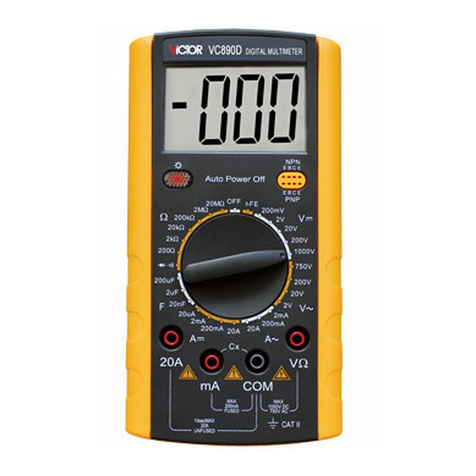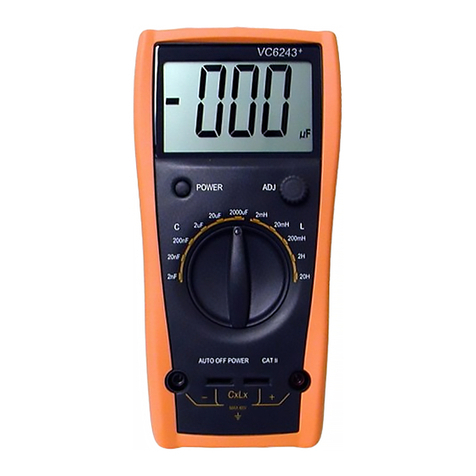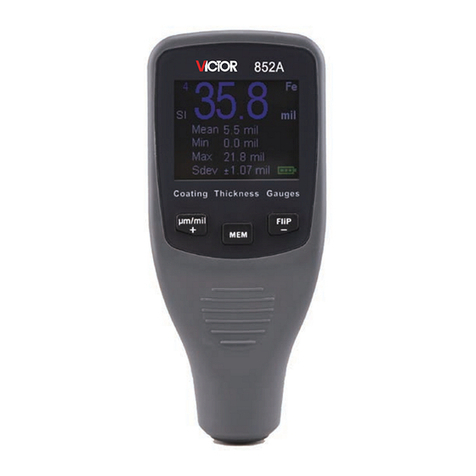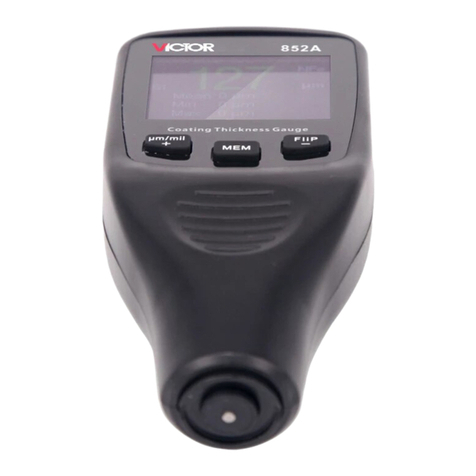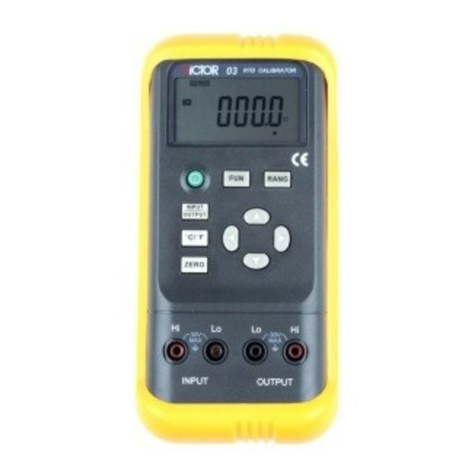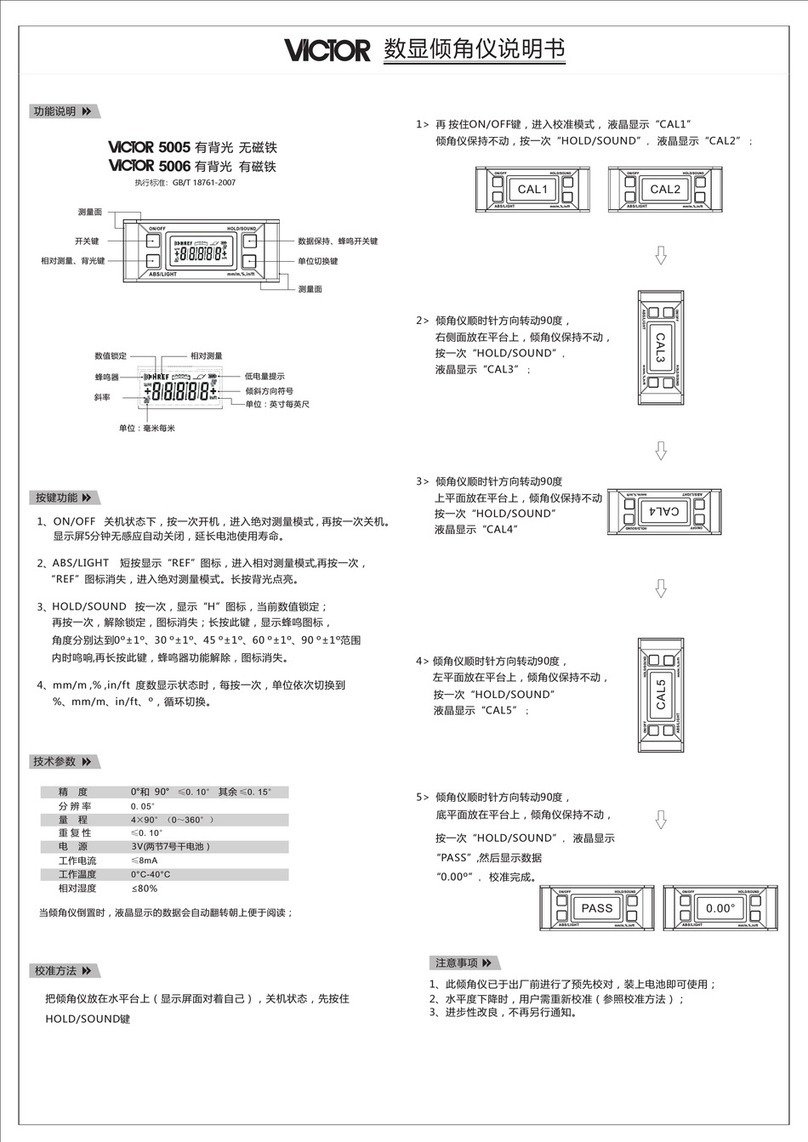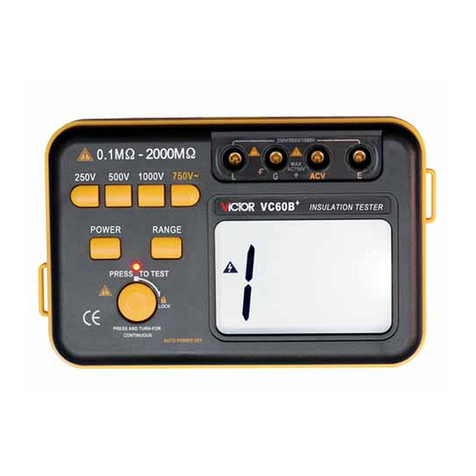
Warning
Thank you for purchasing our VICTOR4000 Double Clamp Digital Phase Meter, in order to
better use of this product, be sure to:
---- To read this user manual carefully.
---- Comply strictly with safety rules and precautions set out in this manual.
uPay special attention to safety under any circumstances while using the
instrument.
uTake note of the label text and symbols on the panel and back of the
instrument.
uMake sure that the instrument and accessories are intact and there’s no
damage to the instrument or test wire insulation layer, or bare and broken wires before using
it.
uMake sure that the function switch has been set up within the appropriate
range before the test.
uCan not be used to test voltage higher than 500V.
uIt’s prohibited to use the instrument without the rear cover and battery cover
in place.
uMake sure that the connection plug is closely inserted in the socket.
uDon’t use or replace batteries if the instrument is wet.
uTest is prohibited in flammable and dangerous places.
uThe test line could only be pulled out from the instrument after being removed
from the measured wire; don’t touch the plug jack by hand to avoid an electric shock.
uDo not use the instrument in strong electromagnetic environment in order to
prevent the equipment from work improperly.
uStop using the meter in case of metal exposure due to a broken chassis or
fractured test line.
uDo not place or keep the device in hot and humid environment, or places of
dew condensation or long time direct sunshine.
uThe instrument and current clamp must be maintained regularly to keep
clean, corrosive solution and coarse materials can't be used to clean the clamp.
uKeep the current clamp from any impact, especially the clamp joints.
uThe instrument has an automatic shutdown function.
uRemove or replace the battery if the instrument is not used for a long time,
and take note of the battery polarity.
uTake note of the measurement range and application environment required
for the instrument.
uThe operation, demolition, calibration and maintenance of the instrument
must be carried out by qualified personnel authorized to do so.
uThe meter should be stopped from being used immediately and sealed if
danger is brought up in case of continued use; only a competent body can be authorized to
deal with it.
u“ ” in the manual is the safety warning sign, the contents of this manual
must be followed for safe operation.
u“ ” and other safety signs, the contents of this manual must be followed
for safe operation.
A.Introduction
The VICTOR4000 Double Clamp Digital Phase Meter is a well-developed multi-functional
